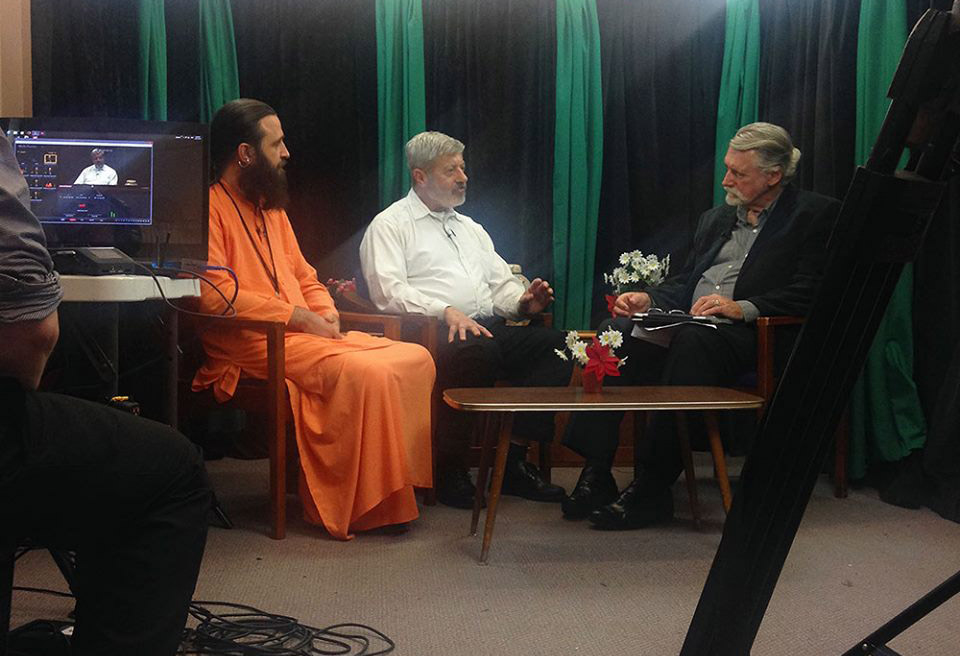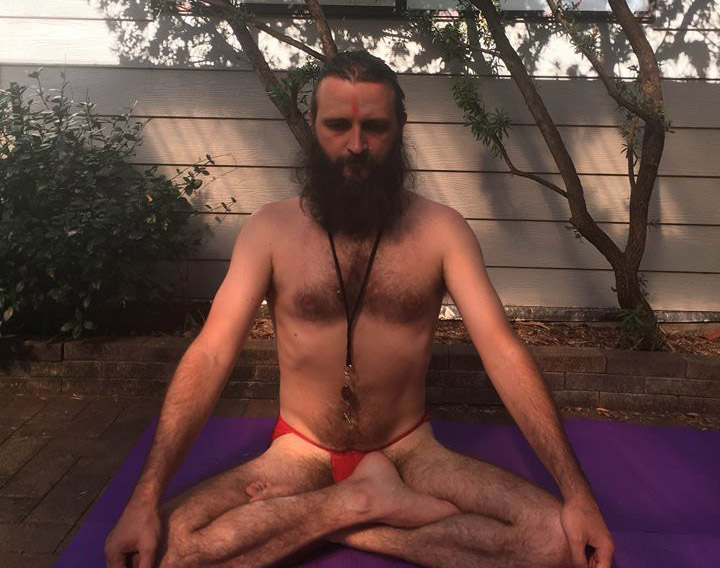In Gheraṇḍa Saṃhitā (4-35-44), at first, purification of nadīs is given in the form of using the alternate breathing technique with breath holdings, using bijas, which we can find in tantric rituals, such as bhūta-śuddhi or, for example, those intended to remove doṣas (defects) from some offerings. In that way, impurities are dried up by the bija of Air यं ‘yaṃ’ and then they are burned by the bija of Fire रं ‘raṃ’. Further, the remained ash is getting wet by the element of Water or Nectar by the corresponding bija वं ‘vaṃ’ (as it often happens in tantric practices), but sometimes in yogic and tantric texts another bija symbolising nectar ठं ‘ṭhaṃ’ is suggested to use instead. Then a newly formed body should be strengthened by the bija of Earth लं ‘laṃ’. Some prāṇāyāmas reduce these elements to only three bijas (of Air, Fire and Nectar) because in yoga, it is very typical to minimise the practise to the most essential components.
As in a tantric ritual, in Gheraṇḍa Saṃhitā, there is a description of the further use of the alternate breathing but in combination with praṇava ‘Om’. Also, in the third part of Vasiṣṭha Saṃhitā prāṇāyāma with the use of praṇava ‘Om’, or, more precisely ‘A-U-M’ – three mātrās or counts of breath lengths, is described. It is said that a practitioner must mentally repeat अं ‘aṃ’ a certain number of times on the inhalation, then उं ‘uṃ’ during kumbhaka and मं ‘maṃ’ on the exhalation. It is recommended to meditate on each of the three elements as on one of the Goddesses, namely ‘A’ – Gāyatrī, ‘U’ – Sāvitrī and ‘M’ – Sarasvatī. Gāyatrī is described as बाला bālā in a Sanskrit text, which usually means ‘a child, a girl at the age of eight’. She is red in color and rides on a swan (haṃsavāhinī). U-kara is Sāvitrī, she is described as युवती ‘yuvatī’ (she’s 15 y.o.). She is white in color and rides on Garuḍa (garuḍavāhinī). Similarly Ma-kara, or repetition of the vibration of ‘M’ correlates with Sarasvatī, who is described as वृद्धा ‘vṛddhā’, she is 28 years of age or older and she rides Vṛṣabha.
In Gāyatrīhṛdayam from Devī Bhāgavata Purāṇa is said:
॥ गायत्रीहृदयम् ॥
पूर्वा भवति गायत्री, मध्यमा सावित्री, पश्चिमा स्नध्या सरस्वती ।
रक्ता गायत्री, श्वेता सावित्री, कृष्णा सरस्वती ॥ १२॥
pūrvā bhavati gāyatrī, madhyamā sāvitrī, paścimā snadhyā sarasvatī ।
raktā gāyatrī, śvetā sāvitrī, kṛṣṇā sarasvatī ॥12॥
In the morning it is necessary to worship Gāyatrī, at noon – Sāvitrī, and in the evening –Sarasvatī. Gāyatrī is red in color, Sāvitrī is bright, Sarasvatī is dark.
Although, there are differences about vāhanas (beings used as vehicles), for example in Gāyatrī Hṛdayam:
पूर्व सन्धि ब्राह्मी, मध्य सन्धि माहेश्वरी, परा सन्धि वैष्णवी ।
हंसवाहिनी ब्राह्मी, वृषवाहिनी माहेश्वरी, गरुडवाहिनी वैष्णवी ॥ १४॥
pūrva sandhi brāhmī, madhya sandhi māheśvarī, parā sandhi vaiṣṇavī ।
haṃsavāhinī brāhmī, vṛṣavāhinī māheśvarī, garuḍavāhinī vaiṣṇavī ॥14॥
In the first sandhya (in the morning) she is known as Brahmī, at noon as Maheshvarī, and in the evening she is Vaishnavī. Brahmī rides a swan, Maheshvarī rides a bull, Vaishnavī rides Garuda.
Something similar exists in many yogic texts where it is recommended to use praṇava (OM).
For instance, in the fifth upadesha of Gheraṇḍa Saṃhitā (shlokas 48-50) there is also a recommendation to use A-kara, U-kara and Ma-kara. But there, A-kara is connected with raja-guṇa and Brahma and is red in color, U-kara is connected with sattva and Viṣṇu and is black. And Ma-kara, in opposite, is white in color and connected with Śiva.
Here, as you can guess, some similarities with Śri Vidya are immediately come to mind. In the third part of Jñānārṇāva Tantra (shlokas 11-12), it is said that Tripurasundarī is a Goddess with three aspects, the one is with bija “aiṃ” and white in color, the Goddess in red color with kama-bija “klīṃ” and the Goddess suvarṇa (the golden color) with bija “sauḥ”. At first she is like Bala, a girl at the age of eight, then she is Pancadaśī (15 y.o.), this is a time full of passion (kāma), and finally she is Śodaśī or Mahaśodaśī (from 16 to 28 years of age or older) – she is full of wisdom.
In yogic texts, It is also said that prāṇāyāma is the unity of three matras, i.e. in case they are unrelated to each other – it would mean a loss and a waste of the vital energy (prāṇa), but not it’s enhancement.








